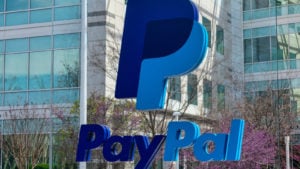On Dec. 19, the NASDAQ 100 hit 16,772.71, an all-time high, with plenty of Nasdaq 100 stocks to buy. Up 53% year-to-date due to its surge in 2023, it is the tech-heavy index’s best annual return since 2009. It’s also tied for the second-best performance in its history. Only 1999 produced a better year.
As a result of the performance in 2023, the Invesco NASDAQ 100 ETF (NASDAQ:QQQM) trades at nearly 27x its earnings per share and forward PE of 23.1. By comparison, the SPDR S&P 500 ETF Trust (NYSEARCA:SPY) has a forward PE 179 basis points lower than the Nasdaq 100.
Driving a big chunk of the NASDAQ 100’s return in 2023 are three stocks: Apple (NASDAQ:AAPL), Microsoft (NASDAQ:MSFT) and Nvidia (NASDAQ:NVDA), all part of the “Magnificent 7.”
However, not all of the 100 names in the Nasdaq 100 are overbought. According to Finviz.com, approximately half of the 100 names have forward PE ratios of less than 23.1, the average for the entire index.
Here are the three Nasdaq 100 stocks to buy that aren’t overbought.
Diamondback Energy (FANG)

It should not be surprising that Diamondback Energy (NASDAQ:FANG) has one of the lowest forward PE ratios in the NASDAQ 100. That’s because energy stocks have returned to earth in the final quarter of 2023 as oil prices have fallen.
FANG stock is still up 19% year-to-date and 70% over the past five years. Unfortunately, that’s less than half the return of the Nasdaq 100.
Among the 100 names in the index, Diamondback has the second-lowest forward PE at 7.76, about one-quarter of Microsoft’s. By most of its valuation metrics, it’s either below its five-year average or equal to it. It’s certainly not overvalued.
Of the 33 analysts covering its stock, 27 rate it Overweight or an outright Buy, with a target price of $181, 16% higher than where it’s currently trading.
Diamondback finished the third quarter with a net debt of $5.6 billion, down $1.1 billion from Q2 2023 and just 20% of its market capitalization. An uptick in oil prices would accelerate its debt repayment.
It’s a sound play.
PayPal Holdings (PYPL)
PayPal Holdings (NASDAQ:PYPL) has the sixth-lowest PE of the Nasdaq 100 stocks at 11.10. Its shares are down 17% in 2023, making it the sixth worst-performing stock in the index. Worse, if you’ve held for the past five years, they’re down more than 25%. Very few in the index are in negative territory during this period.
PYMNTS.com contributor Karen Webster makes it easy to understand why PayPal stock has seriously underperformed relative to many other fintech stocks over the past few years.
If a payments and commerce expert like Webster is bemoaning PayPal’s checkout process — I haven’t used it in years — it’s easy to see the company’s trouble growing.
The board’s move to hire Alex Chriss as CEO, who was formerly in charge of Intuit’s (NASDAQ:INTU) small business and self-employed group was a wise choice given the challenge of getting the payments company back on track.
Trading at just 5.8x cash, there is no question this is a contrarian play. However, it could also be rewarding if Chriss strikes the right chord with consumers and merchants.
T-Mobile US (TMUS)

T-Mobile US (NASDAQ:TMUS) is part of the S&P 500’s Communication Services sector. Year-to-date through Dec. 21, the segment’s return is up 54.7%, the best-performing of the index’s 11 sectors. Meta Platforms (NASDAQ:META) is a significant contributor to the gains, up 183% in 2023, 15x higher than TMUS stock.
InvestorPlace’s Rich Duprey made a compelling argument for owning TMUS at the end of November. While my colleague made several excellent points about why it was a buy, his best had to do with the wireless carrier’s capital allocation strategy.
For the first time in company history, T-Mobile pays a dividend. With the Dec. 15 payment of $0.65, its annual payment of $2.60 yields a reasonable 1.7%. It plans to hike the annual payment by 10% per year. As Duprey pointed out, as part of its capital allocation strategy, it plans to pay out $19 billion in dividends and share repurchases over the next five quarters.
I’ve always believed that T-Mobile was a better buy than either AT&T (NYSE:T) or Verizon Communications (NYSE:VZ). I recently recommended it in July, suggesting that former CEO John Legere did an excellent job taking T-Mobile through the merger with Sprint, leaving the company in much better shape than he found it in September 2012.
Trading at 15.6x its forward PE, T-Mobile’s superior growth remains a much better buy than either T or VZ.
On the date of publication, Will Ashworth did not have (either directly or indirectly) any positions in the securities mentioned in this article. The opinions expressed in this article are those of the writer, subject to the InvestorPlace.com Publishing Guidelines.

